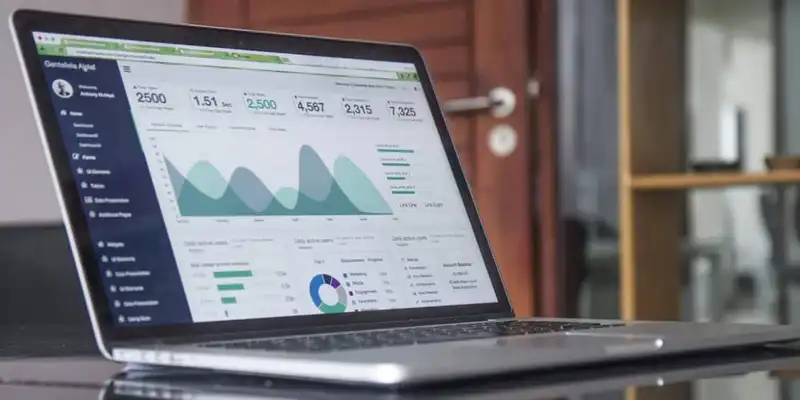Reporting and Analytics- What's the Difference?
It can be difficult for businesses to sift through and manage the vast amount of data they often collect. Reports that help make company information more understandable in the form of brief summaries allow owners to know what's happening in their day-to-day operations.
However, many owners and managers don't want to just understand what happened. They need to know why it happened to improve decision-making processes. Recognizing which external and internal factors contributed to changes in a company's performance, and what solutions are available can help resolve problems.
Reporting and analytics are a form of business intelligence that work together to summarize information and provide recommendations so businesses can continue innovating and growing, however there are also key factors that differentiate the two variables.
What is Reporting?
Reporting is the process of organizing data into summaries to determine how well a business is performing. It utilizes different data sources to translate raw data into valuable information. Data sources can include production databases, operational databases, or software tools. Reporting only gives standardized summaries of information rather than analyses or evaluations. It also provides quantitative and statistical answers to questions. Reporting answers questions such as-
- What was the company's gross income last year?
- How many employees are working in the Sales Department?
- How many people are reading the company blog on a daily basis?
- What are the demographics of the company's customers?
- What was the company's total business expenses last month?
What are Analytics?

Analytics vary from reporting in that it provides insights into the collected data. The purpose of analysis reports is to address problems, find solutions, evaluate company policies, and determine which factors affect market trends. It allows businesses to know which steps to take to increase their bottom line and improve overall business operations. Some examples of questions that analysis addresses include-
- What are the contributing factors that led to an increase in production last year and how can the company continue this trend?
- What new technologies contributed to the company's increase in efficiency and productivity this quarter?
- Why are certain franchises attracting more customers than others, and what can be done to address this?
- What external forces contributed to the company's decrease in annual profits
Key Differences
Reporting is simpler
Data reporting consolidates information and makes it easier to understand by including summaries and data visualizations. Unlike analytics, it does not identify or elaborate on the contributing factors that affected the data.
For instance, management could inquire with human resources to get a headcount of how many new hires were brought on during the fiscal year. HR can then refer to the system database and create a report listing the number of new hires. The report would not include additional information, like why more/fewer employees were brought on this past year versus the year before, as the report's capabilities are to only include a summary of existing data.
Both provide value, but analysis offers more
Though reporting has value in that it translates data into information, analytics provides solutions that can be applied to make important business decisions. While reporting answers what happened, analytics answers why it happened, and what can be done to resolve it.
For example, analytics might show there is a decrease in company efficiency because a particular vendor takes longer to make shipments because of a temporary shortage of a certain material. The report would recommend either put the order in ahead of time, find a more reliable vendor, or research alternative materials to utilize. The analysis provides recommendations on how to move forward so owners can achieve the desired outcome.
Examples of Reporting and Analytics

Each aspect of the business has specific needs that must be addressed, and both reporting and analytics can be applied in unison to find the best solution for each matter at hand. Here are some examples of how various departments can utilize reporting and analytics-
1. Marketing
In this instance, a financial analyst firm finds prospective clients by doing presentations at local restaurants and offering free dinners to those that attend. The firm wants to know if the number of newly acquired clients outweighs the cost of dinners and whether or not this form of network marketing is financially viable.
A report can utilize big data to calculate the total cost of dinners since the experiment began, along with the new client lists acquired per dinner. This is the reporting portion of the process because it simply takes existing data and converts it into a readable document.
Once the company has discovered whether or not they are receiving a return on investment, they can decide to dig deeper and see which external factors contributed to the increase or decrease in new clients and what other network marketing experiments have worked for competing companies. The company could then decide whether or not this particular form of sales is worth it or if they want to try something different.
2. Customer Success
For example, a spa wants to know how many new clients they have received over the past month and if the change correlates to new management and updated operational standards. If there was a decrease, the spa wants to assess various solutions.
This example requires both reporting and analysis because the spa wants to know how many new clients they have received (reporting) and what contributing factors led to the increase or decrease (analysis). If there is a decrease in new clients, the spa wants a list of recommendations (analysis) in order to move forward and adjust their policies and procedures. The spa could take data from customer feedback surveys to help find out more information about the change in clients, and adjust their customer service/management strategy accordingly.
3. Sales
To illustrate, a printing company wants to know the number of new clients acquired last quarter and what their projected income is for the next quarter. The company wants to decipher whether or not the number of new prospects will lead to an increase in revenue going forward. They also want to know what types of services/products will see an increase in purchases and why.
The newly acquired clients in the previous quarter is the reporting portion. The company can then make predictive analyses of how it will affect the future sales. Further analysis can find out which products/services are most popular with new clients so the company can continue to invest in them. They can also dig into why there was an increase in clients and what can be done to continue growing their customer base.






